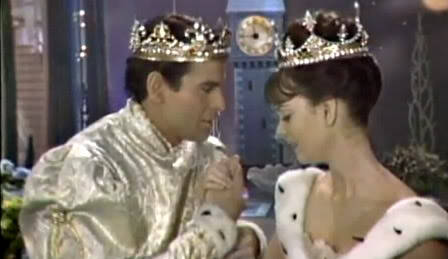Sometimes the best way to hear one story anew is by way of another, even one that, at first glance, seems quite disparate. So, as you ponder the Transfiguration of Christ, consider Cinderella. Yes, one is evangelical witness; the other, only fable. But, as fairytales often convey deep truths, they’re not a bad approach that singular truth, which we call Gospel.
Ask yourself this. What did the Fairy Godmother really do for Cinderella? Yes, a pumpkin coach, with four white mice for horsemen, is grand, but, walking into the ball, she was still Cinderella, just cleaned-up, coiffed, and corseted. Yet that was all it took for the world see her in a new way, see her for who she truly was. It’d be fair to say that her Fairy Godmother didn’t really change Cinderella. She reset her, as one does a jewel, or, to use our Latinate phrase, she transfigured her. Yet she was always the same girl: at the fireplace, at the ball, and in front of the prince, proffering that slipper. Fairy magic did no more than help folk to see what always was, right in front of them.
I have no intention of deflating the Transfiguration of Christ into a reality-show make-over. Indeed, we should be on our guard against reductionism of any sort in approaching the event. We know only what the evangelists tell us:
He was transfigured before them;
his face shone like the sun
and his clothes became white as light.
And behold, Moses and Elijah appeared to them,
conversing with him (Mt 17: 2-3).
Don’t belittle the story with blinders—say, for example, pseudo-scientific ones. It doesn’t help to say that such things don’t happen, that the Transfiguration isn’t scientific. Why not?
One of the first presuppositions of scientific methodology is repeatability. Science can’t study the truly singular, because the singular is, by definition, unrepeatable. Science is predicated upon finding patterns in the periodic. That’s why most of history is closed to science, at least the parts that matter most, because history doesn’t really repeat itself, only its patterns return. No one of us has passed through history before. We are as fully distinct as our forebears. Aunt Ellen may act like a wicked stepsister, yet she’s still quite singular.
We do know this about the Transfiguration. Three apostles were given an utterly unique experience of the Christ, one which, they admit, was not truly intelligible until the event of Resurrection. Like the Prince and Cinderella at the ball, it was a moment to savor. A night of profound intimacy and beauty—Remember that great line from the Rogers and Hammerstein’s adaptation? “Do I love you because you’re beautiful? Or are you beautiful, because I love you?—but comprehension came later, when the glass slipper fit and everything fell into place.
It’s the same in our lives. The future has a way of rewriting the past. The young man who had to attend his college of second choice doesn’t even recall his first selection, not when he meets the girl of his dreams on campus. A grief transfigures to gladness, yet the past didn’t change. A parent laments the toll, that a child with special needs exacts, until those very needs prove their worth, becoming a source of blessing for all who know the adult. History regularly rewrites itself. To use our odd word, it “transfigures” in significance, and it will do so until its close.
In his Transfiguration the disciples saw the glory of Christ. That revelation was so singular, it filled them with fright. “When the disciples heard this, they fell prostrate and were very much afraid” (Mt 17:6). His deepest identity was revealed to them—“This is my beloved Son, with whom I am well pleased; listen to him” (17:5)—but truly adequate comprehension had to await the Resurrection, when history really, really rewrote itself.
“Bear your share of hardship for the gospel with the strength that comes from God” (2 Tim 1: 8B). A Christian claims that all of human history is translated into, transfigured by the Christ. The meaning of the end has been revealed, yet we need the rest of time to comprehend the clue, which is
the grace bestowed on us in Christ Jesus before time began,
but now made manifest
through the appearance of our savior Christ Jesus,
who destroyed death and brought life and immortality
to light through the gospel (2 Tim 1: 9-10)
Yes, it’s true. At present we wander through our woes like the prince savoring his one poor slipper. But we know the one whom we love was here, that he will yet be found, and that all shall be well.
Genesis 12: 1-4a 2 Timothy 1: 8B-10 Matthew 17:1-9








